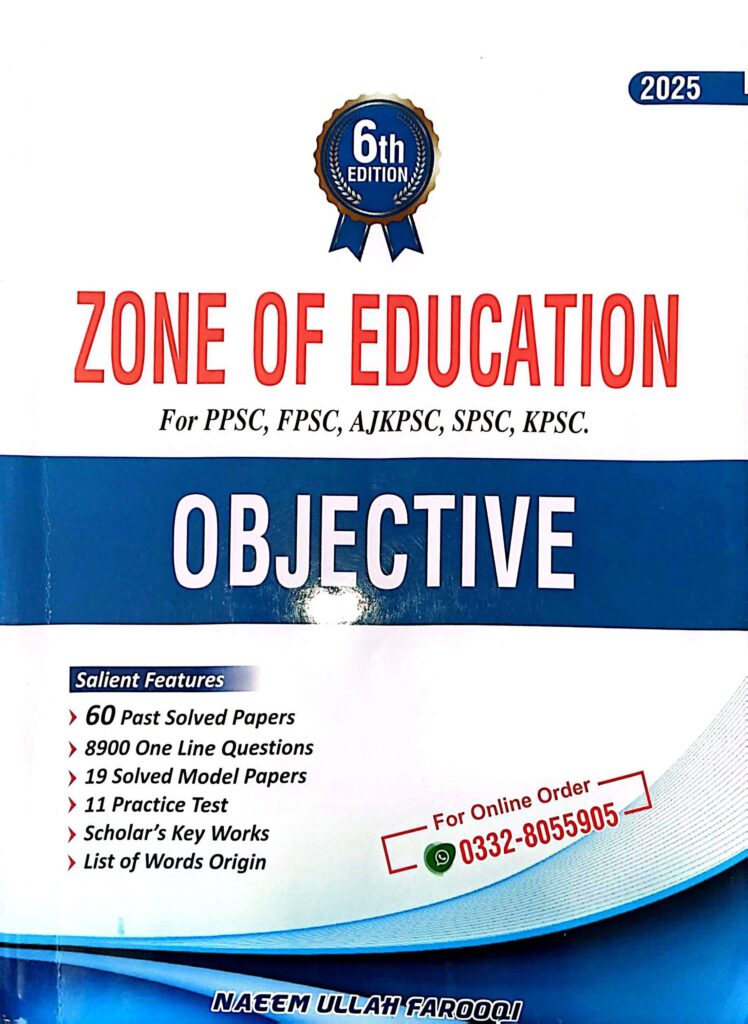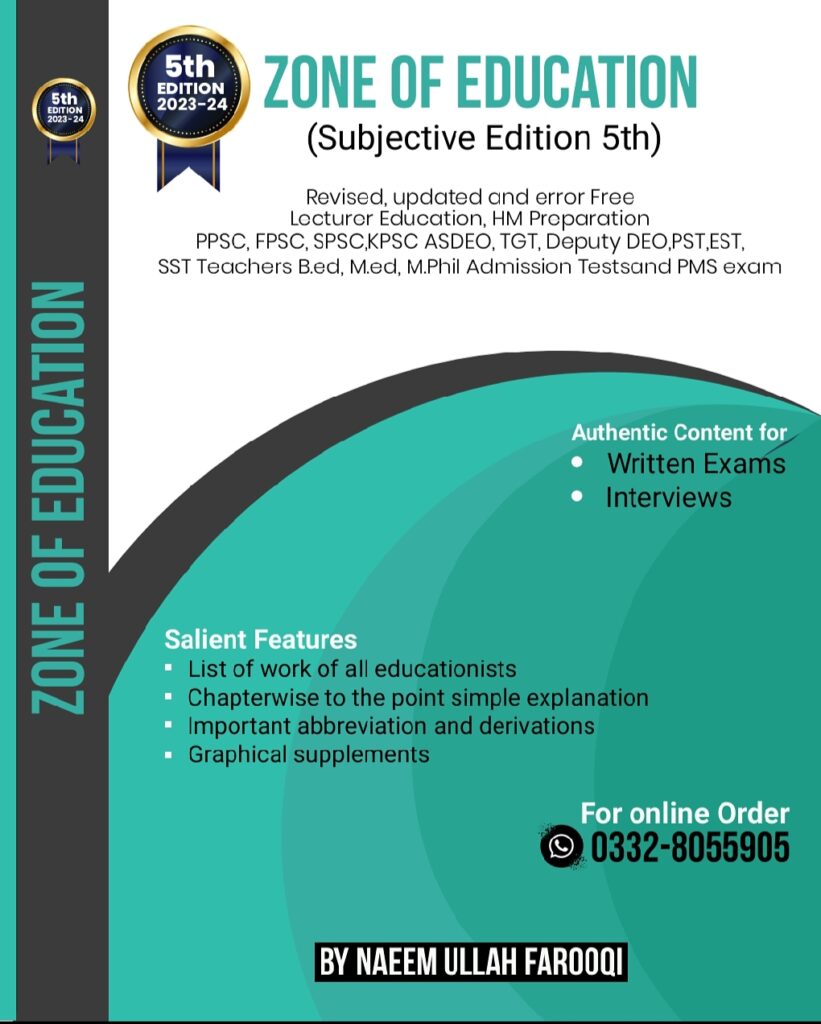Psychology
.1. Academic acceleration is basically an exercise of ensuring progress for every child according to his/her:
A. Status in the society
B. Age
C. Physical attributes
D. Potential (Ans)
2. Academic acceleration requires a curriculum according to students’:
A. Ability
B. Potential
C. Exceptionality
D. All of the above (Ans)
3. The students who are provided with extraordinary curriculum experiences are often termed as:
A. Special Children
B. Able Children
C. Gifted Children (Ans)
D. Genius Children
4. Social and emotional development of gifted students with an accelerated curriculum is ensured through:
A. Parenting
B. Classroom instruction
C. Individual counselling (Ans)
D. None of the above
5. Gifted students are in a position to make informed decisions about their education. In other words, the curriculum is organized through discussion with the students. This curriculum is then called a:
A. Direct curriculum
B. Participation curriculum
C. Negotiated curriculum (Ans)
D. Prescribed curriculum
6. The IOWA Acceleration Scale offers a thoughtful and careful objective guide for:
A. IQ level of students
B. Academically accelerated progression (Ans)
C. Aptitude of the students
D. None of the above
7. In educational psychology, an understanding of adult learning and the adult learner is important because it gives an understanding of:
A. Professional Learning
B. Vocational Education
C. Ideal Learning
D. Lifelong learning (Ans)
8. The adult learning psychology normally refers to the learning of those persons who:
A. Learn at adult age
B. Learn parallel with their work
C. Learn in after work hours
D. All of the above (Ans)
9. The first major study of adult learning was published by E. L. Thorndike and his colleagues in the 1928 book:
A. Adult Behaviour
B. Adult Philosophy
C. Adult Education
D. Adult Learning (Ans)
10. Thorndike proved through different researches and experiments that learning is possible till the age of:
A. 25
B. 35
C. 45 (Ans)
D. 55
11. In the adult learning perspective, memory involves the acquisition, retention, and recall of information. Hence it is closely linked with:
A. Skills
B. Intelligence (Ans)
C. Attitude
D. Aptitude
12. In theoretical terms, strategies to teach children are known as pedagogy, whereas adult learning is termed as:
A. Pathology
B. Ideology
C. Andragogy (Ans)
D. Dermatology
13. Aggression is a common problem mostly found among:
A. Teachers
B. Adult Learners
C. School children (Ans)
D. School Management
14. The aggression results in negative outcomes for both aggressors and the victims:
A. Psychological
B. Educational
C. Social outcomes
D. All of the above (Ans)
15. Aggressive behavior can be defined as any act that is aimed at:
A. Hitting physically another individual
B. Harming another individual (Ans)
C. Bullying another individual
D. None of the above
16. Instrumental aggression is also called:
A. Proactive aggression (Ans)
B. Defensive aggression
C. Potential aggression
D. None of the above
17. Instrumental aggression is that which is intended to obtain resources or social status. The example of such aggression is:
A. A child who refused to play with peers
B. A child who misuses the pocket money he or she possesses
C. A child who pushes a peer in order to take a toy (Ans)
D. None of the above
18. Reactive aggression is basically a response to:
A. Perceived offense or threat (Ans)
B. Parallel aggression shown by some peer
C. Physical engagement in fighting with some peer
D. None of the above
19. Following is an example of Reactive Aggression:
A. The child refuses to play with the peer
B. The child hits the peer without any reason
C. The child asks for favor from the peer during play
D. The child who hits a peer during a dispute (Ans)
20. Alternative Academic Assessment is described as alternative because they are often used as an alternative to published norm-referenced and criterion-referenced tests:
A. Continuous assessment approaches
B. Formative assessment approaches
C. Measurement approaches (Ans)
D. None of the above
21. Many Academic Assessment Approach procedures can also be described as:
A. Performance-based assessments
B. Curriculum-based assessments
C. Both of the above (Ans)
D. None of the above
22. Curriculum-based evaluation (CBE) is used to:
A. Identify specific areas of skill deficit (Ans)
B. Identify basic qualities of students
C. Identify basic enrichment in the curriculum
D. All of the above
23. Anxiety is basically an extreme state characterized by feelings of distress and tension:
A. Physical
B. Emotional (Ans)
C. Sensual
D. Literal
24. Psychologists believe that in small amounts, anxiety can serve as a:
A. Positive reinforcer
B. Motivator
C. Both of the above (Ans)
D. None of the above
25. Many psychologists also believe that anxiety serves as a and protects the individual from harm:
A. Survival Mechanism (Ans)
B. Potential Mechanism
C. Alert Mechanism
D. Original Mechanism
26. Aptitude actually highlights individual differences among learners that are related to subsequent learning during a fixed time frame:
27. An aptitude test is used to predict:
A. Types of learning
B. Individual differences (Ans)
C. Individual Performance
D. None of the above
28. An aptitude test can predict:
A. Future performance (Ans)
B. Future events
C. Future threats
D. Future responses
29. The following can be cited as examples of general aptitude tests:
A. Intelligence Test
B. Career skill/interest Test
C. Personality Test
D. All of the above (Ans)
30. Intelligence testing was originally started as testing of mental capacities in the late 19th century by:
A. Thorndike
B. B. F. Skinner
C. Benjamin Bloom
D. Sir Francis Galton (Ans)
31. Attachment disorder is generally defined as a failure to develop or to show a selective attachment toward:
A. Parents
B. Mother only
C. Father only
D. At least one individual (Ans)
32. Individuals with ADHD may be:
A. Inattentive
B. Impulsive
C. Hyperactive
D. All of the above (Ans)
33. Attention deficit hyperactivity disorder (ADHD) is basically a:
A. Diverse behavioral syndrome (Ans)
B. Diverse mental syndrome
C. Diverse physical syndrome
D. Diverse emotional syndrome
34. Research indicates that boys are more likely than girls to be diagnosed with ADHD:
A. 2 times
B. 3 times (Ans)
C. 4 times
D. 5 times
35. Treatment of the symptoms of ADHD that is based on the principles of applied behavioral analysis and operant conditioning is termed as:
A. Behavioral programming (Ans)
B. Behavioral modification
C. Behavioral treatment
D. None of the above
JOIN ZONE OF EDUCATIONPK!
Discover the most comprehensive and reliable pedagogy resources in Pakistan, curated for competitive exam success. Our content covers all competitive exam MCQs, including PPSC, FPSC, AJKPSC, SPSC, and more. Designed to empower learners with top-notch material and insights, trust us for your preparation journey!


